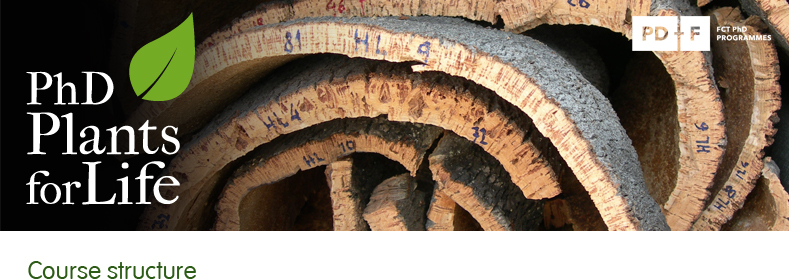Plant Metabolic Regulation
Coordinators
Isabel Abreu
Elena Baena-Gonzalez
Objectives
The curricular unit (CU) aims to improve student competences in Plant Metabolism, therefore requiring basic knowledge in biochemistry. Unique plant biochemical features and how they relate dynamically to plant performance will be considered, i.e. metabolic regulation, primary and secondary metabolism, and integration of events at different levels of analysis (from biomolecules to plants). The CU highlights the need and the relevance of integrating metabolic events within the plant and its environment. Students will acquire the necessary skills to assess in a critical way the complexity of the plant system and its ability to adapt. Students will also develop the ability to critically analyse and present a research paper related to the topics of the curricular unit.
Syllabus
The Plant Metabolic Regulation CU will include a general introduction to the lectures, seminars and evaluation method. The lectures will be based on the following main topics:
I-Carbohydrate Metabolism
- The concept of metabolite pools
- Sucrose biosynthesis
- Starch biosynthesis
II-Fundamentals of the Regulation of Plant Metabolism – Part I
III-Fundamentals of the Regulation of Plant Metabolism – Part II
IV- Fundamentals of the Regulation of Plant Metabolism – Part III
- Plant metabolic responses to specific stresses
V-Plant biotechnology and bio-products
-
Main classes of bio-products
-
Adaptive advantages for plants
-
Factors affecting their production
VI-Extraction and analysis of volatiles
-
Methods for the extraction of essential oils and of volatiles
-
In lab demonstration of essential oils extraction by hydrodistillation
-
In lab demonstration of GC and GC-MS analysis of essential oils
VII-Molecular Biology of Secondary Metabolism
Main Bibliography
-
Plant Physiology, Lincoln Taiz and Eduardo Zeiger (5th Edition), Sinauer Associates Inc. Publishers (2010).
-
Plant Biochemistry, Caroline Bowsher, Martin Steer and Alyson Tobin (1st Edition), T&F Informa (2008).
-
Biochemistry & Molecular Biology of Plants, Bob Buchanan, Wilhelm Gruissem, Russell Jones (2nd Edition), John Wiley & Sons (2015);
|




